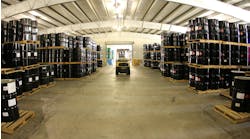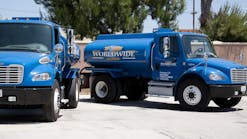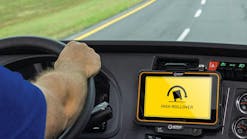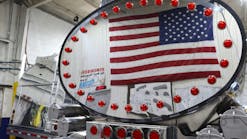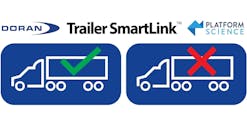Chemical shippers are picky about who hauls their product, and they should be.
If their product spills, or is lost, improperly mixed or otherwise mishandled, the consequences potentially are far more severe than mere inconvenience, or a hit to the bottom line. They can be deadly.
No one is more particular than Lori Pavlish.
The chemical industry veteran oversees global integrated supply chain, transportation safety and security for Dow, one of the largest chemical producers in the world, and her diligence has helped make Dow one of the most thorough chemical manufacturers when it comes to establishing the rules for carrying their products.
Pavlish discussed those protocols, including carrier requirements, reporting procedures and Dow’s emergency response processes, in “Transportation Emergency Management—Partnering to Protect People and the Planet” during the Intermodal Tank Container Association’s 2019 Intermodal Bulk Liquid Symposium.
Safety in operation
Dow runs a massive chemical operation, with manufacturing sites in 31 countries, 113 different facilities, not including contracted locations, and 31 sites in the US alone. The company ships products to customers in 160 countries, many of which don’t have Dow facilities, so the company uses logistics service providers to move product by every mode available, including road, rail, bulk marine, air and package marine.
They also ship from warehouses and bulk liquid terminals, and are heavily involved in transloading product.
“When you add all of those different shipping points, and then you add the different types of modes and supply chains, and have all those fingers in the pie, so to speak, really what we end up with is a very complex model,” Pavlish said.
To help manage their vast supply chain, Dow, a member of the American Chemistry Council, relies heavily on its Responsible Care partners and the guiding principles established in the council’s safety initiative.
“Part of our requirement as an American Chemistry Council member is to work with customers, carriers, suppliers, distributors and contractors to foster the safe and secure use, transport and disposal of chemicals, and provide hazard and risk information that can be accessed and applied in their operations and products,” Pavlish said.
Dow takes that responsibility seriously. So, as part of its safety mission, Dow requires all logistics service providers to inform them of anything that happens to one of their products—regardless of the amount affected—during transport, or at any point in the supply chain, even if the product in question isn’t regulated for transport, like non-dangerous goods or plastic pellets, which still can impact people or the environment.
“If something happens during transportation, we want to know about it,” Pavlish said. “We’re funny like that.”
Pavlish also wants to make sure carriers know everything about CHEMTREC, a division of the American Chemistry Council that provides 24-hour emergency hazmat incident response support. In fact, if carriers hauling their product know only one thing, it should be CHEMTREC’s phone number, which is on all Dow’s shipping documents. CHEMTREC has a safety data sheet (SDS) for each of Dow’s chemicals, and if they can’t satisfy a specific question, they’ll call the manufacturer—or any company that might have the answer.
“If you’re handling a product and you can’t get ahold of somebody at that company, the shipper, you can always call CHEMTREC, and they can help you,” Pavlish said. “They will hunt you down a resource to help you with that product.”
Reportable events
Dow wants to know about all unplanned safety or security events related to its products, so the list of events requiring reporting is long. It includes:
• Personnel exposure or injury—If someone comes into contact with one of the company’s products, or there is an injury related to the handling or transport of their product, Dow wants to know.
• Impact to community—If there is a highway closure or evacuation that inconveniences or displaces anyone, Dow wants to know.
• Product release—All releases of any product must be reported, regardless of amount, time, location or other factors. “I’ve been doing this for a while and nobody has ever called me to report a spill I wasn’t interested in,” Pavlish said. “I don’t care how small it is.”
• Accidents—Any incident involving the transport of Dow’s products must be reported, including those that don’t involve a product release or injury, which helps the company combat “he said, she said” situations. “This prevents more trouble and more drama than anything I can think about,” Pavlish said. “If we hear about something first from our logistics service provider, we have the opportunity to hopefully get ahead of the situation, do what we need to do, pool our resources and say, ‘Let’s talk about this,’ and not wait until somebody comes back with a completely different version.”
• Repackaging—Dow needs to know about any events that cause product to be repackaged en route to a destination. If a product shows up in a different container than the one listed on the shipping documents, it could be a big problem.
• Known or suspected mixing of products—If Dow chemicals are mixed with any other chemicals—which Pavlish says happens more than people think—the company wants to know. These mix-ups often come down to simply not reading a document before signing it. “It’s absolutely shocking to me—shocking—how a carrier, for example, can deliver my product … to the wrong address, which doesn’t even have an account with us,” Pavlish said. “Then they get my chemicals, take them and unload them into their process.”
• Security events—These include human or contraband smuggling. Pavlish said Houston is a hotbed for stolen or diverted freight, and human smuggling is a growing problem in Europe. “If our container is being transported and you find people in it, we’d like to know about it,” Pavlish said.
• Product that is unaccounted for—If the whereabouts of Dow’s products are unknown, Dow cares. Pavlish said her team can help find it, if they know its missing.
• Evidence or suspicion of tampering—Everyone is interested in security, and Dow’s no exception. If seals have been messed with or are missing, Dow wants to know.
Reporting process
Reporting transportation safety and security incidents to Dow starts with an initiating event in which a carrier, or whoever has custody of the company’s product at the time of the event, triggers an emergency response appropriate for the event’s severity and calls CHEMTREC per instructions on Dow’s shipment paperwork.
Next, CHEMTREC provides the caller with the SDS and notifies Dow at its Emergency Services and Security (ESS) call center, which is open 24 hours a day, seven days a week. Then Dow ESS contacts the caller to establish a line of communication, confirm an appropriate emergency response has been initiated, and ensure Dow product stewards or reactive chemistry subject matter experts are available as needed.
Dow will maintain the communication channel with the caller, or designated representative, as long as the incident scene is active, Pavlish said, and issue communications about the incident to personnel on its pre-determined internal distribution list. And finally, after the scene is cleared, Dow’s Transportation Safety, Security and Sustainability and modal teams will follow up with the carrier, investigate the situation, learn as much as possible about the incident and do everything they can to ensure it doesn’t happen again.
That’s Dow’s plan, and anyone handling its products better have one, too, Pavlish said.
“We require emergency responders to have a plan in place,” Pavlish said. “You have to have a plan, you have to have resources in place, you have to have thought this through before you need it to make sure you have a level of response that’s appropriate for the type of event that you anticipate with our freight.”
Excellent practices
Know the number for CHEMTREC, and know what the service provides. The No 1 misconception, Pavlish said, is that CHEMTREC is going to send out its own emergency response personnel to handle an incident. “We need the carriers to understand CHEMTREC is for reporting,” she said. “Response is usually a contract.”
Have a plan in place before an incident occurs. Pavlish prepares and rehearses emergency response plans with her own family, so she has no sympathy for carriers who are unprepared for a spill involving Dow’s products. As she says, the time to introduce yourself to first responders is not when they’re wearing hazmat suits.
To stay prepared, periodically analyze supply chain components, identify critical contacts and review communication strategies. Make sure contacts are up to date, and secondary contacts are established in case the primary is unavailable. “Do a tabletop drill of your communication plan for an unplanned event and take out one component,” Pavlish advised. “Piece by piece, think of it as a series of blocks, and if you take out that component, is the communication path going to work?”
Pavlish recommends using the Department of Homeland Security’s Business Continuity Plan templates, available at ready.gov/business/implementation/continuity. “I’ve had personal testimonials from businesses that took our suggestion and developed a response planned based on these templates,” Pavlish said. “There’s no charge, you just hit a button and download them. This is one of the best resources available.”
And for carriers who have questions about how equipment should be prepped for transporting Dow’s chemicals, the company maintains a Material Handling Guidelines Repository at mhg.dow.com that provides all the answers.
“Our carriers told us that we were particular about prior content, and I’m not going to deny that,” Pavlish said. “I accept that. So we initiated a global project to consolidate all of the information about all our products and put them into one source of truth, as we call it, and make it available to our logistics service providers.”

